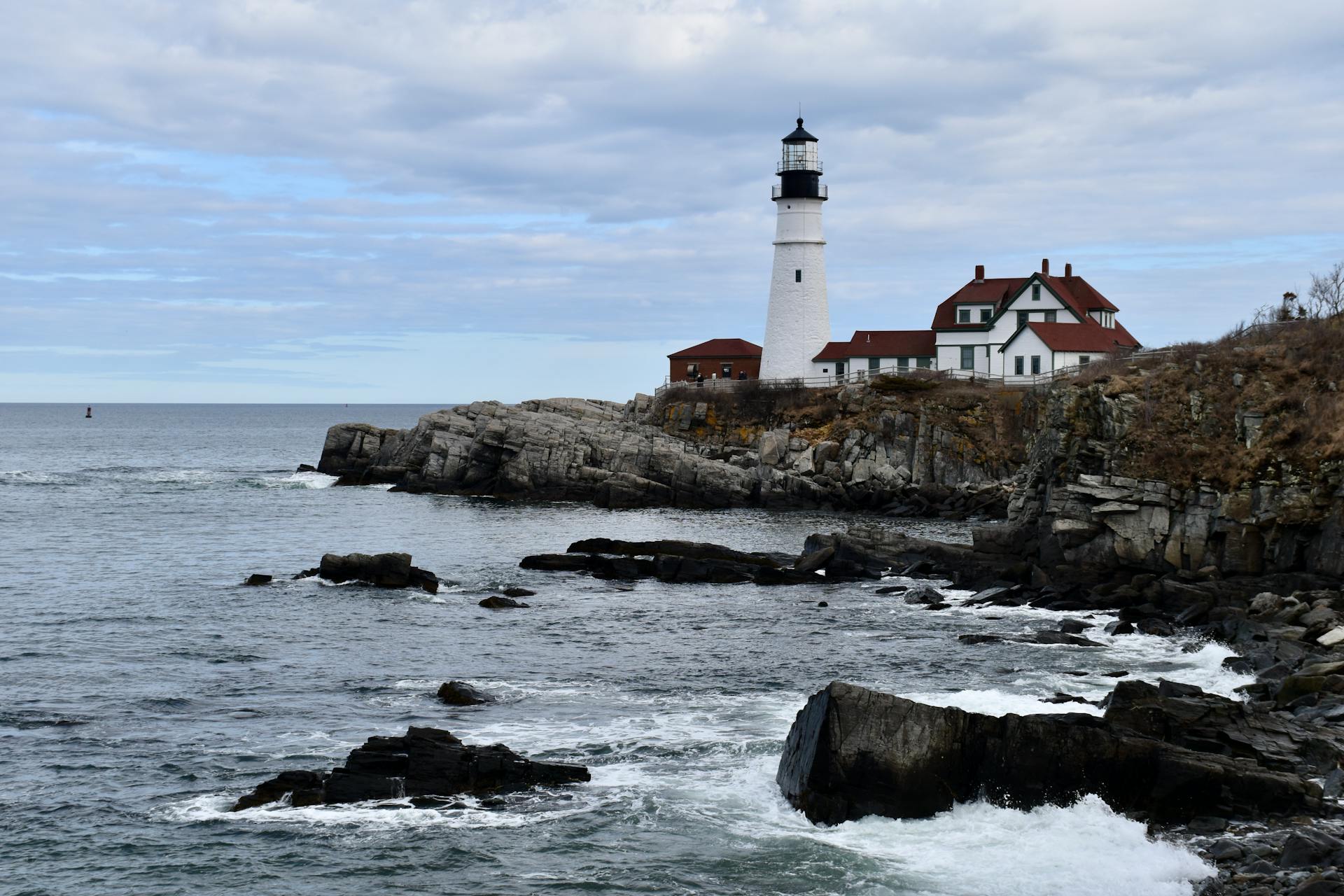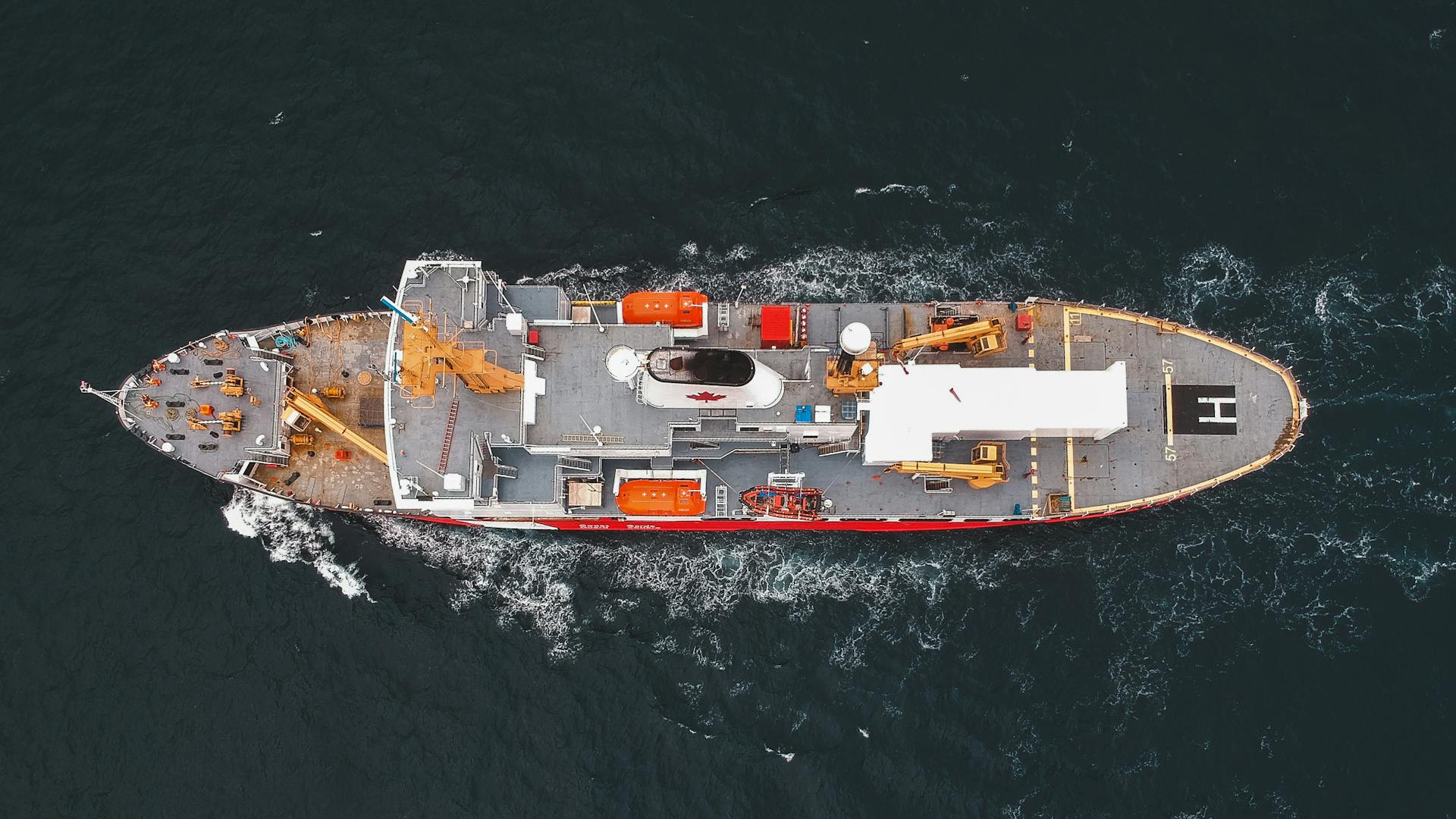
The United States Merchant Marine Academy (USMMA) is a unique and challenging experience that prepares students for a life of service and leadership. The academy is located in Kings Point, New York, on a 162-acre campus overlooking the Long Island Sound.
The academic program at USMMA is designed to provide students with a well-rounded education that includes a strong foundation in mathematics, science, and engineering. Students can choose from a variety of majors, including marine engineering, navigation, and international trade.
Cadets at USMMA are expected to maintain a high level of physical fitness and participate in regular exercise and sports. The academy has a robust athletic program with teams competing in the NCAA Division III.
Life at USMMA is highly structured, with a strict code of conduct and a focus on building character and leadership skills. Cadets are encouraged to take on leadership roles and participate in extracurricular activities to develop their skills and build their resumes.
History and Organization
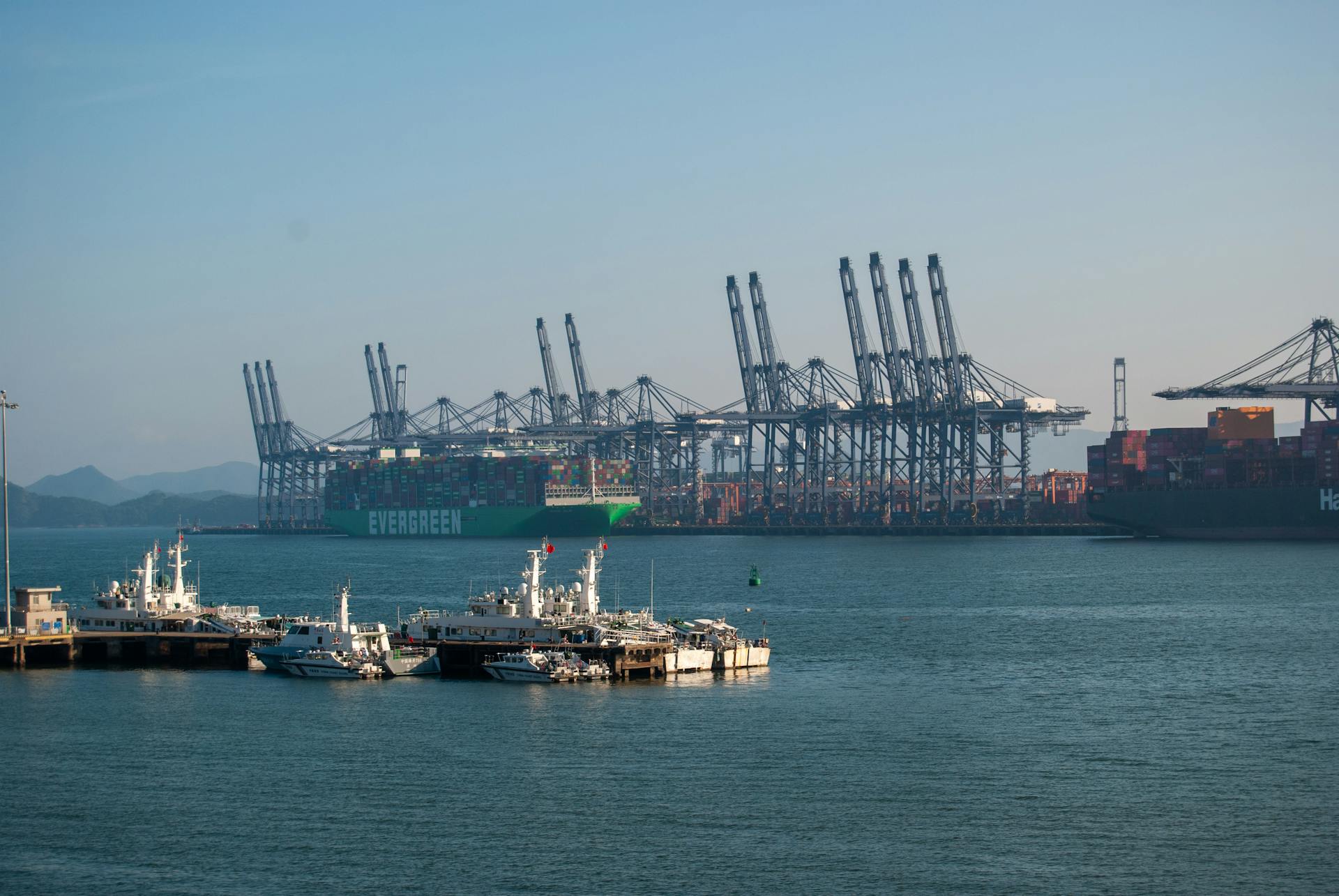
The United States Merchant Marine Academy has a rich history dating back to 1891, when the federal government authorized the assignment of cadets aboard ships receiving mail, marking the beginning of a program for merchant-marine officer training.
The academy was formally established in 1938 as the U.S. Merchant Marine Cadet Corps, with the goal of providing a comprehensive training program for future merchant marine officers. Temporary shore facilities were soon established to support the growing program.
The academy's campus was built on the grounds of the Walter P. Chrysler estate, with construction beginning in January 1942 and the academy being dedicated on September 30, 1943. President Franklin D. Roosevelt dedicated the academy, likening it to West Point for the Army and Annapolis for the Navy.
During World War II, the academy played a significant role, berthing as many as 2,700 cadets at one time and graduating 6,634 officers throughout the war. The academy continued to accelerate training during the Korean War and the Vietnam War to supply officers for the merchant marine.
History
The U.S. Merchant Marine Academy has a rich history dating back to 1891, when the federal government authorized the assignment of cadets aboard ships receiving mail. This marked the beginning of a program to train merchant-marine officers.
The academy's development was accelerated during World War II, with as many as 2,700 cadets taking an abbreviated curriculum that included training aboard ships in combat zones. This period saw the graduation of 6,634 officers during the war.
In 1943, the academy was dedicated by President Franklin D. Roosevelt, who compared its purpose to that of West Point for the Army and Annapolis for the Navy. The academy's permanent campus was established in 1942.
The academy accelerated training during the Korean War and the Vietnam War to supply officers. It also played a key role in training officers for the country's first nuclear-powered merchant ship, the Savannah.
In 1974, the Merchant Marine Academy became the first federal service school to admit women.
Congressional Board

The Congressional Board is a key part of the United States Merchant Marine Academy's governance structure.
The Board of Visitors is responsible for providing independent advice and recommendations to the President and Congress. This board is composed of 19 members.
Two Senators are appointed by the chair of the Senate Committee on Commerce, Science, and Transportation. One Senator is appointed by the Vice President of the United States from the Senate Appropriations Committee.
Three members of the House of Representatives are appointed by the chair of the United States House Committee on Armed Services. Two members of the House of Representatives are appointed by the Speaker of the House of Representatives.
The President appoints five individuals, including at least two academy graduates and a senior corporate officer from a U.S. maritime shipping company. These members may also include a Senate-confirmed presidential appointee or a member of the Senior Executive Service.
The Board of Visitors also has six ex officio members.
Organization
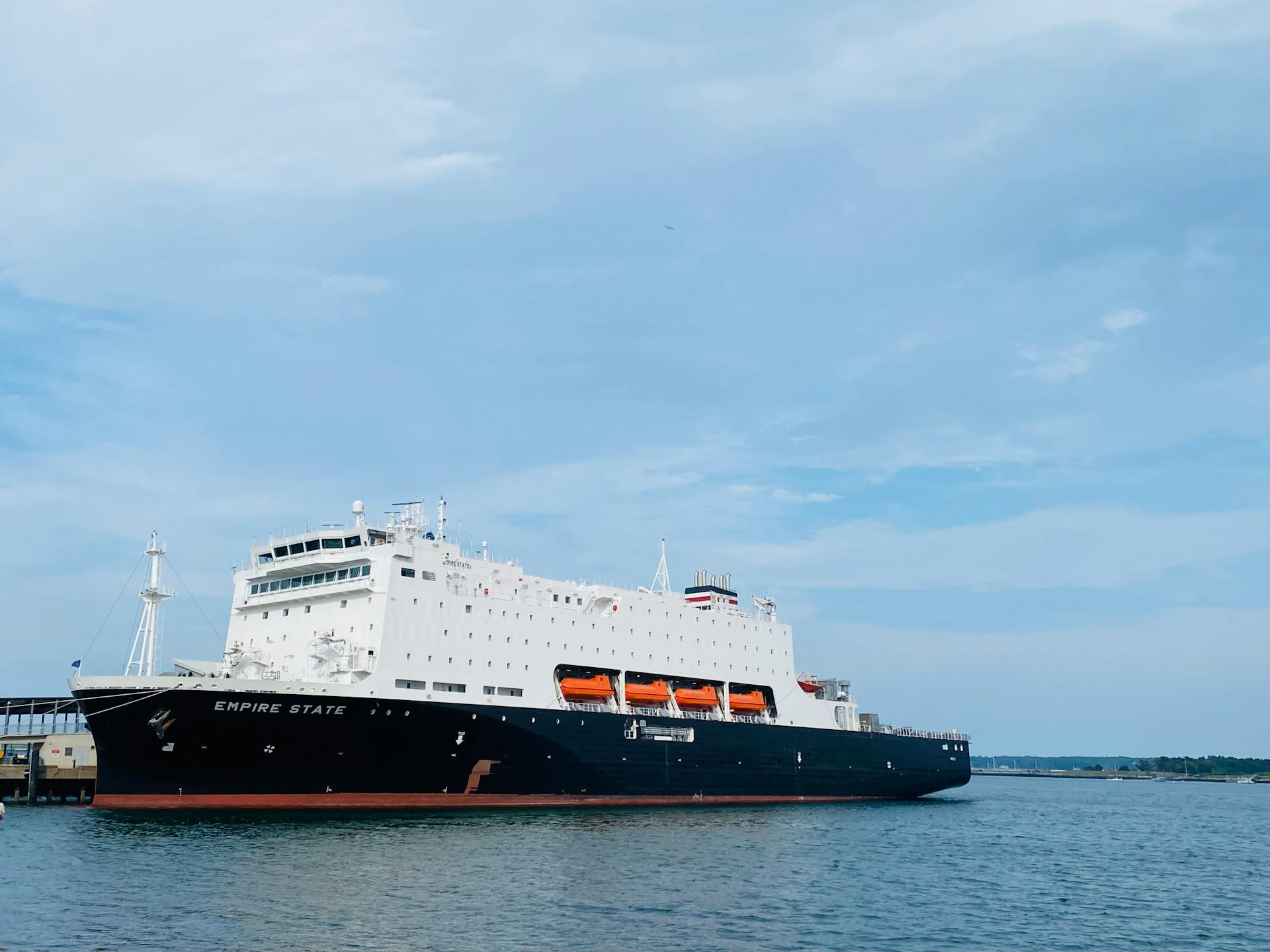
The Academy operates on a significant annual budget of $85 million, which is funded by the US Department of Transportation.
The US Maritime Administration, or MARAD, is responsible for administering the Academy.
The student body is referred to as the Regiment of Midshipmen, which is a unique and prestigious title.
The Regiment is divided into two battalions and five companies: First, Second, Third, Fourth, and Band.
Candidates who have experience playing a musical instrument are highly considered for joining Band Company, making it a sought-after assignment.
Company assignment is random, so every student has an equal chance of being assigned to any of the five companies.
Academy Life
Life at the United States Merchant Marine Academy is a unique blend of academics, leadership, and hands-on training. The academy's curriculum is designed to prepare students for careers in the maritime industry.
Students at the academy are required to take a range of courses, including engineering, navigation, and business administration. They also participate in a summer training program, known as the Sea Year, which provides them with practical experience in the industry.
The academy's focus on leadership development is evident in its emphasis on officer training and mentorship. Students are encouraged to take on leadership roles and develop their skills through various programs and activities.
Regimental Life
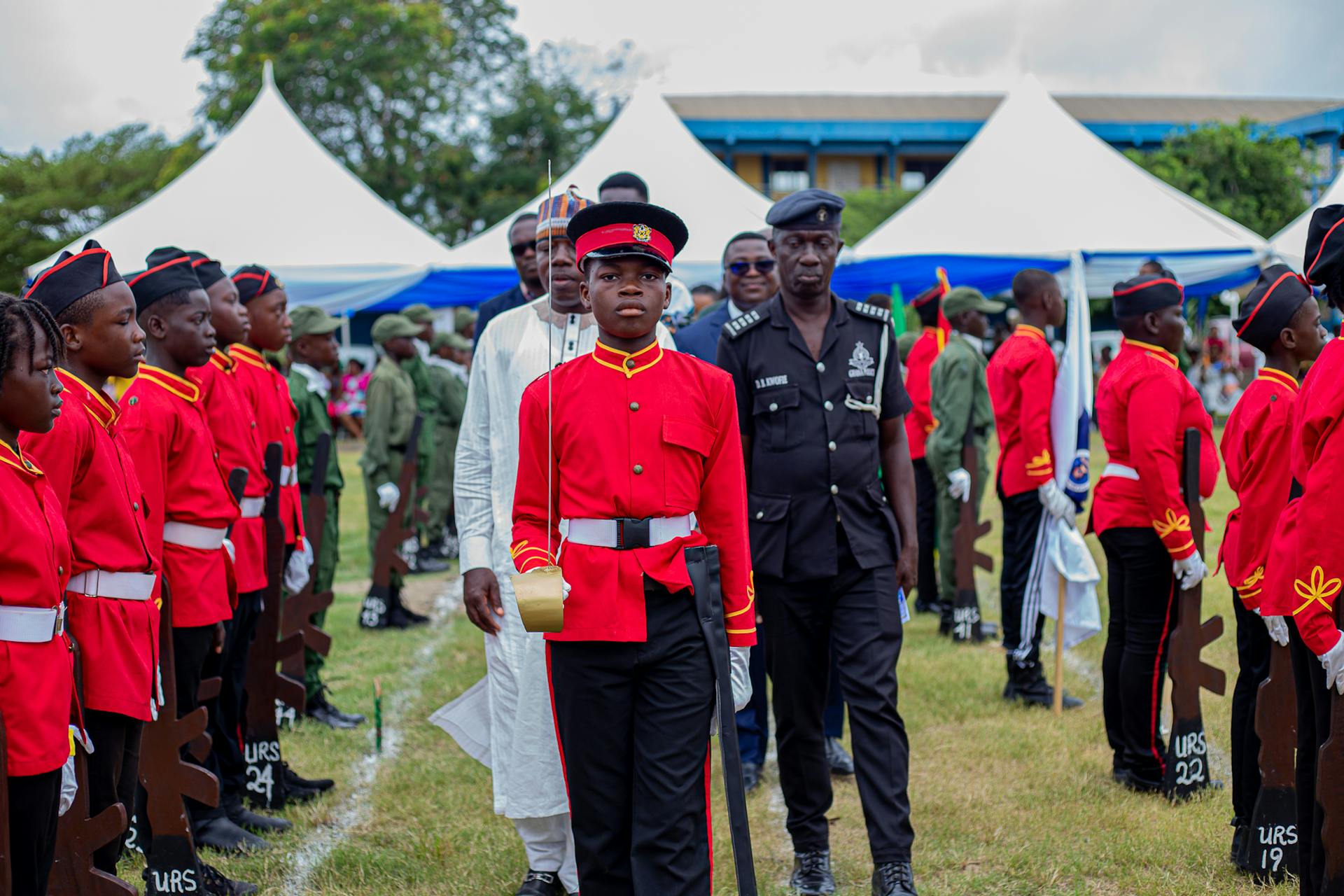
Regimental life is a big part of academy life, where midshipmen are organized into a regiment and participate in a military-style routine.
This program provides opportunities to practice leadership as midshipmen officers and develop self-discipline, a sense of responsibility, and the ability to adapt to the rigorous life at sea.
Midshipmen are held to a strict system of discipline, where infractions of regulations incur demerits and punishment.
In addition to the regimental program, midshipmen can take part in student government and extracurricular activities like publications, musical groups, and special interest clubs.
Liberty is granted as a matter of privilege, giving midshipmen some freedom to make their own choices outside of the regimental routine.
Intramural athletic programs and scheduled intercollegiate competitions are also available for midshipmen to participate in.
Participation in religious activities and attendance at services in the Merchant Marine Memorial Chapel are voluntary, allowing midshipmen to explore their faith in a way that feels right for them.
Sea Year
The Sea Year is a crucial part of academy life, where midshipmen get hands-on experience on U.S. flag merchant vessels.
Midshipmen spend three nonconsecutive trimesters during their second and third year of training at sea, getting introduced to life on ocean vessels.
They're assigned to different types of ships, such as U.S. Navy ships, where they receive voluntary instruction from ships' officers while observing and performing junior officer duties.
This work-study situation serves as a laboratory, where midshipmen complete assignments from a sea project manual and submit them to the academy for grading.
Academy training representatives in New York, New Orleans, and San Francisco oversee their progress and assign midshipmen to the ships.
Admission and Requirements
To become a midshipman at the Merchant Marine Academy, you must be at least 17 years old but not yet 25 by July 1 of the year you'd enter the school.
The academy requires applicants to be U.S. citizens, although a limited number of international students are admitted.

To register for the application portal, students must create a Login.gov account with an email address that's not provided by their high school.
Applicants must receive a nomination from a member of Congress, which can be from the same state or territory as the student.
The academy requires high school transcripts and ACT or SAT scores to be submitted, along with recommendation letters from teachers and an adult to administer the Candidate Fitness Assessment.
To be considered for admission, applicants must have completed a minimum of three units of English, three units of math, and one unit of chemistry or physics with a lab.
The academy recommends taking a fourth math unit, calculus, and both chemistry and physics.
Each year, the academy selects 266 men and women for admission.
Candidates are ranked in order of merit by an objective evaluation of all credentials.
The academy admits up to thirty students from Latin America and certain other foreign countries.
The U.S. government covers the majority of academy costs, including tuition, quarters, and medical and dental care.
Readers also liked: Cheap Apu for Semi Trucks
Life After Graduation
After graduating from the Merchant Marine Academy, you'll have a few options to consider. You can choose to fulfill your five-year employment obligation by serving five years on active duty, which about 25% of graduates do.
Graduates who don't choose active duty will instead work in an academy-approved occupation in the U.S. maritime industry for five years. This can be a great way to gain experience and build your career.
Some examples of academy-approved occupations include working as a civilian officer on a U.S. merchant vessel, serving as a commissioned officer in the U.S. military or National Oceanic and Atmospheric Administration, or working in another maritime-related profession in certain circumstances.
Here are some specific examples of academy-approved occupations:
- Civilian officer serving on a U.S. merchant vessel.
- Commissioned officer in the U.S. military or National Oceanic and Atmospheric Administration.
- Employee in another maritime-related profession in certain circumstances.
In addition to fulfilling your employment obligation, you'll also commit to reserve military service for eight years following graduation. This is a significant commitment, but it's one that can provide valuable experience and skills.
Notable Individuals
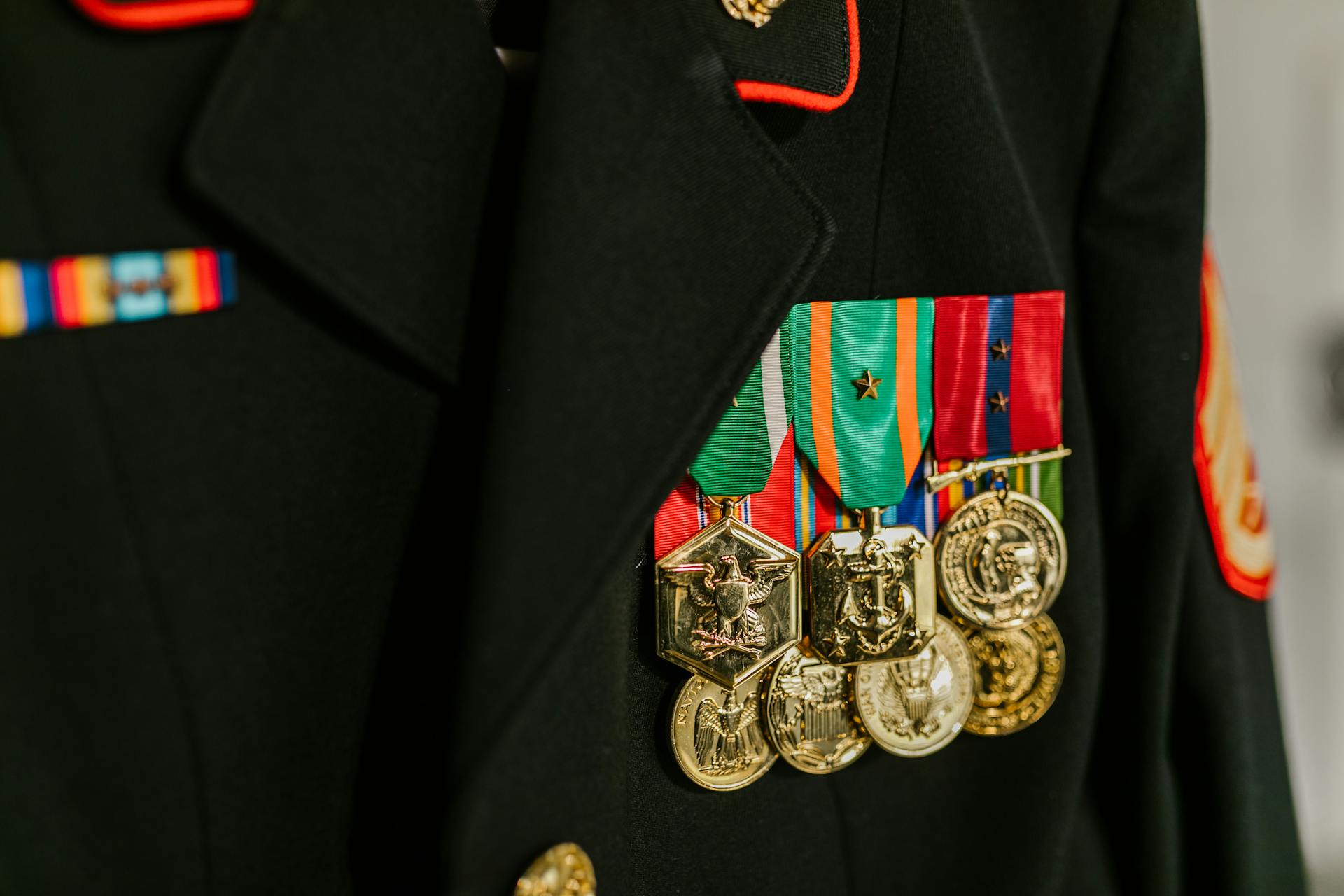
The United States Merchant Marine Academy has a long history of producing talented and accomplished individuals. One notable example is Robert H. Scarborough, a 1944 graduate who became the first USMMA graduate to become a Vice Admiral in the United States Coast Guard.
Several USMMA graduates have made significant contributions to the field of literature, including Theodore "Ted" Taylor, who wrote over 50 fiction and non-fiction books, and Robert Kiyosaki, author of the Rich Dad, Poor Dad books.
Other notable individuals include John Diebold, known as the "Father of Automation", and Mark E. Kelly, a NASA astronaut who flew on four space shuttle missions.
Here are some of the most notable USMMA alumni:
The academy has also produced several distinguished midshipmen who have received the Merchant Marine Distinguished Service Medal, the highest award that can be bestowed upon members of the United States Merchant Marine.
Notable Alumni
Notable alumni from the United States Merchant Marine Academy have made significant contributions in various fields.

A notable alumnus is Alex Bonner, who graduated in 1943 and went on to win an Emmy Award for his work as a radio and television producer and broadcast executive.
Robert H. Scarborough, a 1944 graduate, achieved the distinction of becoming the first graduate to become a Vice Admiral in the United States Coast Guard.
Theodore "Ted" Taylor, a 1944 graduate, wrote over 50 fiction and non-fiction books, with his 1969 novel "The Cay" being one of his most notable works.
Russell B. Cummings, a 1945 graduate, served as a Texas State Representative from Harris County from 1963 to 1967.
Dean White, a 1945 graduate, was the Chairman and CEO of Whiteco Industries, Inc, a Fortune 500 company.
John Diebold, a 1946 graduate, is known as the "Father of Automation" and wrote the book "Automation" in 1954.
Elliot See, a 1949 graduate, was a Project Gemini astronaut who tragically lost his life in training.
Albert J. Herberger, a 1955 graduate, achieved the distinction of becoming the first graduate to become a Vice Admiral in the United States Navy.
Here are some notable alumni from the United States Merchant Marine Academy, grouped by their notable achievements:
- Government and Politics
- Russell B. Cummings, 1945 graduate, served as a Texas State Representative from Harris County from 1963 to 1967.
- Sean Connaughton, 1983 graduate, served as the Head of US Maritime Administration from 2006 to 2009.
Space Exploration:
- Elliot See, 1949 graduate, was a Project Gemini astronaut.
- Mark E. Kelly, 1986 graduate, was a Space Shuttle pilot.
Business and Entrepreneurship:
- Dean White, 1945 graduate, was the Chairman and CEO of Whiteco Industries, Inc, a Fortune 500 company.
- John Diebold, 1946 graduate, is known as the "Father of Automation" and wrote the book "Automation" in 1954.
Arts and Literature:
- Theodore "Ted" Taylor, 1944 graduate, wrote over 50 fiction and non-fiction books.
Military:
- Robert H. Scarborough, 1944 graduate, became the first graduate to become a Vice Admiral in the United States Coast Guard.
- Albert J. Herberger, 1955 graduate, became the first graduate to become a Vice Admiral in the United States Navy.
- Mark H. Buzby, 1979 graduate, served as a Rear Admiral in the United States Navy.
Notable Faculty
The USMMA has had its fair share of talented faculty members over the years. Kenneth R. Force, a skilled musician, directed the USMMA regimental band from 1971 to 2016.
One of the notable historians to have taught at the USMMA was Clark G. Reynolds. He served as a professor of history and head of the Department of Humanities from 1976 to 1978.
These individuals played a significant role in shaping the minds of the students who attended the USMMA.
Here's a list of notable faculty members mentioned in the article:
- Kenneth R. Force - Musician and director of the USMMA regimental band (1971-2016)
- Clark G. Reynolds – Historian and professor of history and head of the USMMA Department of Humanities (1976–1978)
Distinguished Midshipmen
The Distinguished Merchant Marine Distinguished Service Medal is the highest award given to members of the United States Merchant Marine. It's the service's equivalent of the Medal of Honor.
This medal is awarded to recognize extraordinary heroism and bravery, and it's a testament to the selfless service of these individuals. Since the United States Merchant Marine Academy (USMMA) opened in 1943, eight midshipmen have received this prestigious award.
Here are the names of the distinguished midshipmen who have received the Medal:
- Midshipman Francis A. Dales
- Midshipman Elmer C. Donnelly
- Midshipman Carl M. Medved – Awarded posthumously
- Midshipman Edwin Joseph O'Hara – Awarded posthumously
- Midshipman Walter G. Sittmann
- Midshipman William M. Thomas, Jr.
- Midshipman Phil Cox Vannais
- Midshipman Frederick R. Zito
American Merchant Marine Museum

The American Merchant Marine Museum is a treasure trove of maritime history and artifacts. Located on the campus of the USMMA in Kings Point, New York, it's a must-visit for anyone interested in the maritime industry.
The museum houses a learning center that's open to the public, as well as a vast collection of maritime art and artifacts. It's also home to the National Maritime Hall of Fame, which honors people and ships that have made significant contributions to American shipping.
One of the museum's most impressive exhibits is the world's largest collection of navigation and nautical instruments. If you're interested in maritime history, you'll also want to see the only extensive selection of ship's china on display anywhere in the world.
The museum also contains a back-acting engine from the USS Ranger, a former gunboat that's still in existence. This is a rare and fascinating piece of maritime history that's sure to captivate visitors of all ages.
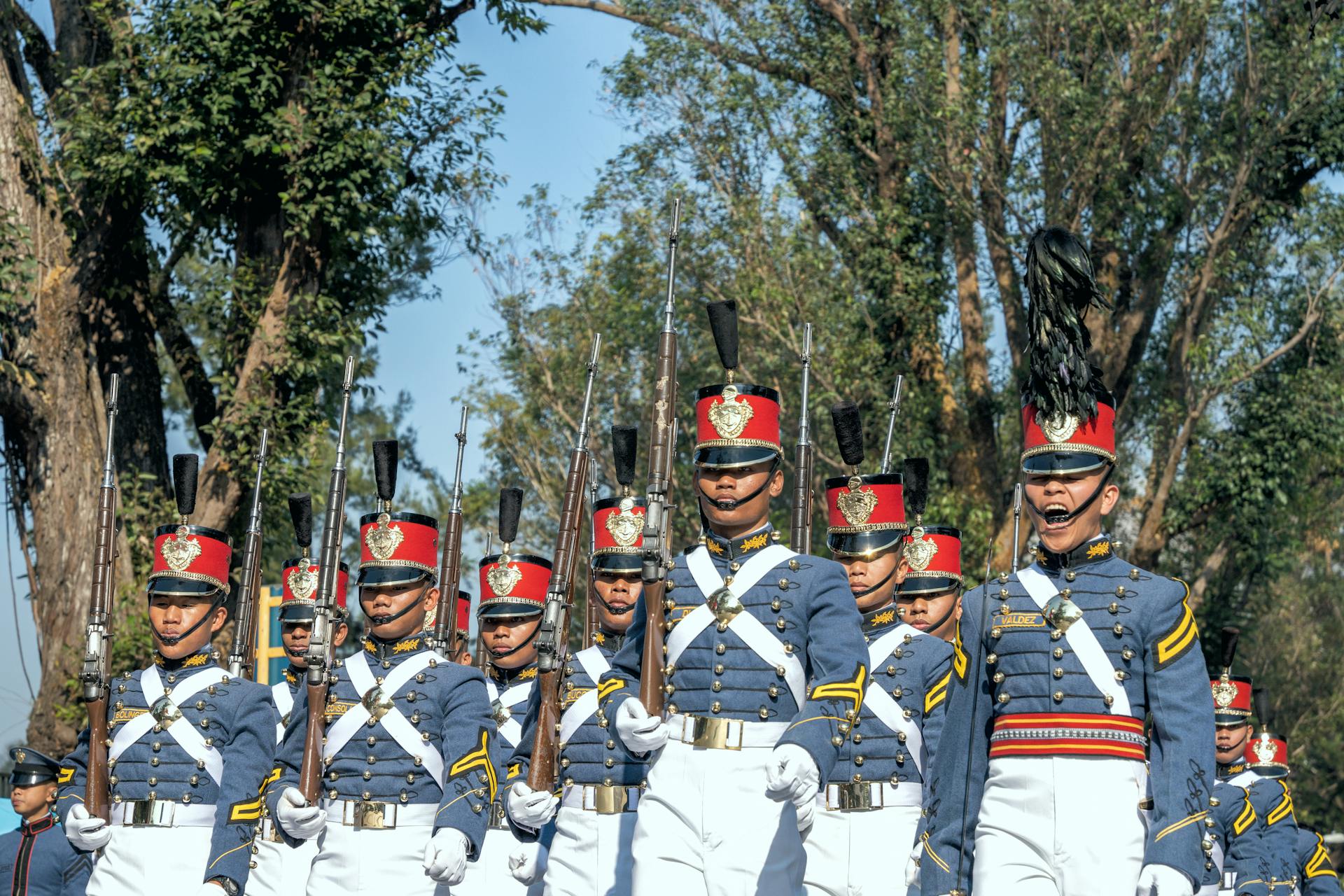
Here are some of the notable items on display at the American Merchant Marine Museum:
- World's largest collection of navigation and nautical instruments
- Only extensive selection of ship's china on display anywhere in the world
- Back-acting engine from the USS Ranger
- One of the five surrender swords presented by the Japanese to General Douglas MacArthur at the conclusion of World War II
The museum is a testament to the rich history and significance of the maritime industry, and it's a great place to learn more about this fascinating topic.
Admission and Facts
To become a midshipman at the Merchant Marine Academy, you must be at least 17 years old but not yet 25 by July 1 of the year you'd enter the school. The academy selects 266 men and women for admission annually.
Applicants must be U.S. citizens, and a limited number of international students are admitted. You'll need to create an account in the USMMA Applicant Portal, which requires a Login.gov account with a unique email address.
The application deadline for the class of 2029 is February 1, 2025, and nominations from a member of Congress are required. The academy must receive the nomination by January 31 of the application window.
Here are some key admission statistics:
92% of incoming freshmen are in the top half of their high school class, with 62% in the top quarter and 24% in the top tenth.
Frequently Asked Questions
Is the US Merchant Marine Academy a military academy?
The US Merchant Marine Academy is a federal service academy that also commissions officers in the Armed Forces, blurring the line between a military and civilian institution. While it's not a traditional military academy, it shares many similarities with those institutions.
Sources
- https://en.wikipedia.org/wiki/United_States_Merchant_Marine_Academy
- https://www.military.com/join-military/us-merchant-marine-academy.html
- https://education.stateuniversity.com/pages/2233/Military-Academies-U-S-MERCHANT-MARINE-ACADEMY.html
- https://www.unigo.com/colleges/united-states-merchant-marine-academy
- https://military-history.fandom.com/wiki/United_States_Merchant_Marine_Academy
Featured Images: pexels.com

